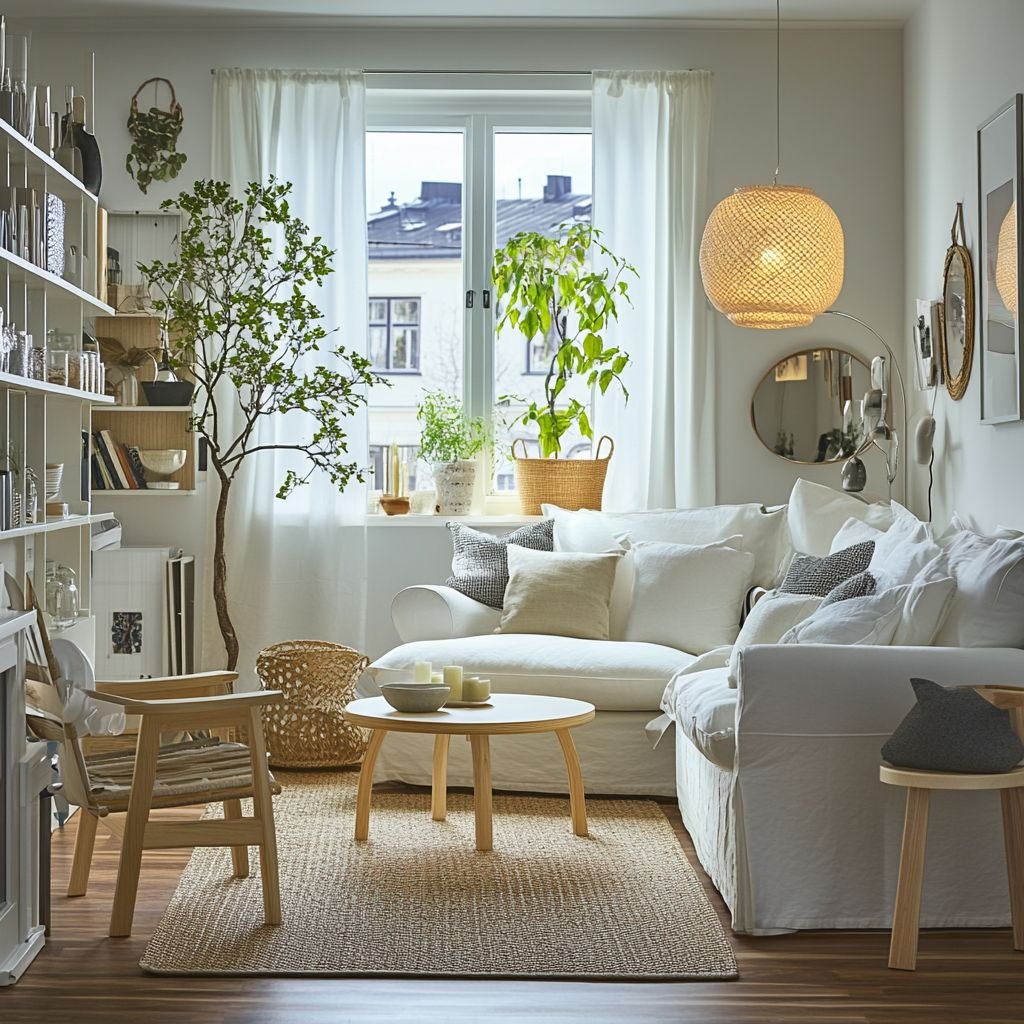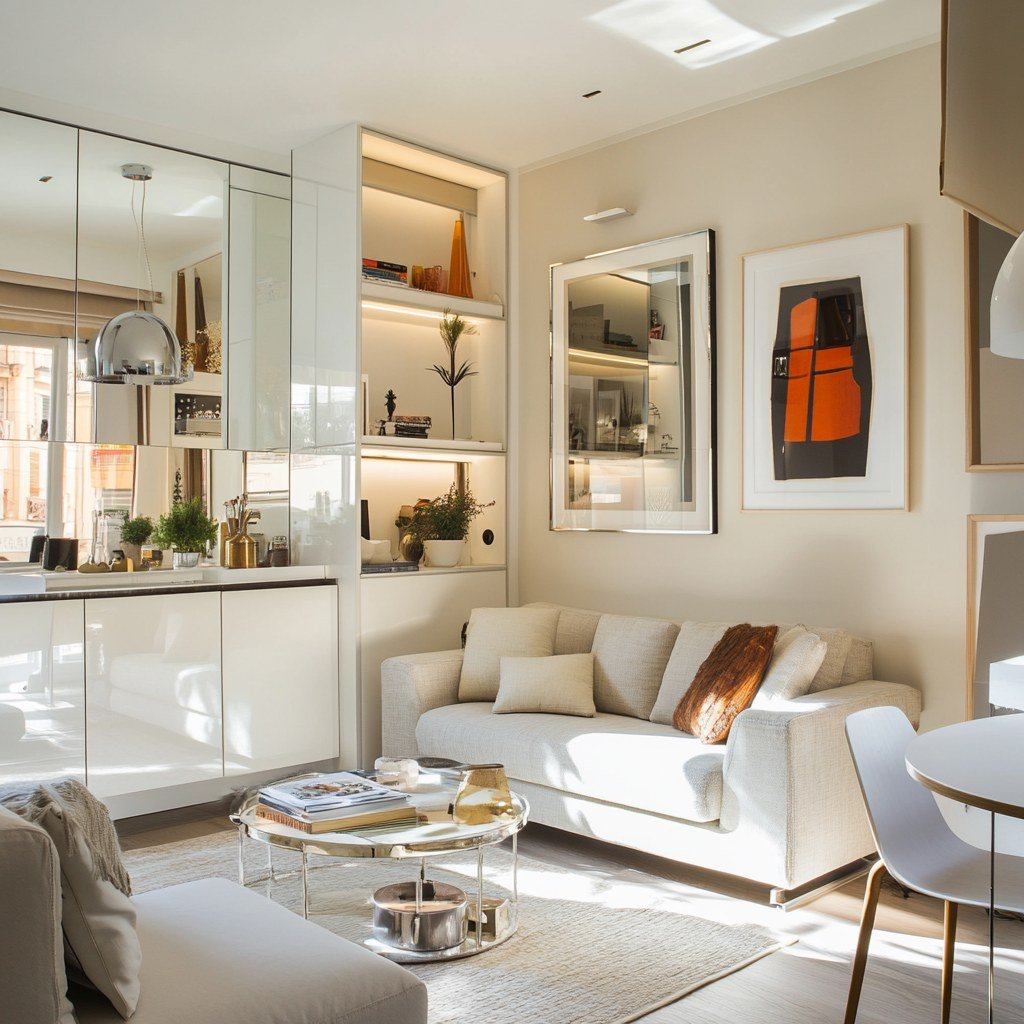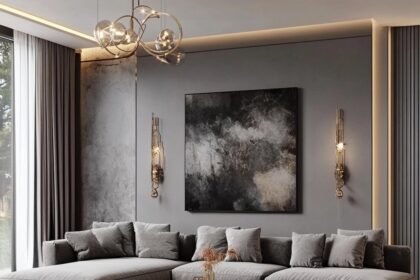Do you ever feel like your home is shrinking? With more people living in urban areas, making the most of limited space has become essential. But don’t worry—small spaces don’t have to feel cramped. With the right strategies, you can transform your cosy nook into a functional and stylish haven. In this article, we’ll share tips and tricks to maximise small spaces in your home, helping you create a comfortable and inviting environment.
1. Declutter and Organise
Start with a Clean Slate
Clutter can make even the largest rooms feel confined. The first step to maximising space is to declutter.
- Sort and Donate: Go through your belongings and donate or discard items you no longer need.
- Organise Essentials: Use storage boxes and organisers to keep things tidy.
- Regular Maintenance: Set aside time each week to keep clutter at bay.
Question for you: When was the last time you used that old sweater or gadget?
2. Use Multi-Functional Furniture
Double Duty Pieces
Furniture that serves multiple purposes is a game-changer in small spaces.
- Sofa Beds: Perfect for accommodating guests without needing a separate room.
- Storage Ottomans: Use them as seating, footrests, or storage.
- Extendable Tables: Ideal for dining areas that double as workspaces.
Example: A coffee table with built-in storage can hold magazines, remote controls, and more.

3. Embrace Vertical Space
Look Up!
When floor space is limited, vertical space becomes your best friend.
- Shelving Units: Install shelves high on walls for books and decor.
- Tall Furniture: Use wardrobes or cabinets that reach the ceiling.
- Hanging Organisers: Great for closets and bathrooms.
Tip: Mount your TV on the wall to free up floor space.
4. Opt for Light Colours
Create the Illusion of Space
Light colours can make a room feel larger and more open.
- Walls and Ceilings: Paint them in whites, creams, or pastels.
- Flooring: Light-coloured floors reflect more light.
- Furniture: Choose pieces in lighter shades.
Imagine: A small room bathed in soft, light hues feels airy and spacious.
5. Use Mirrors Strategically
Reflect and Expand
Mirrors can visually double the size of a room.
- Large Mirrors: Place them opposite windows to reflect light.
- Mirror Walls: A gallery of mirrors can add depth.
- Mirrored Furniture: Consider mirrored cabinets or tables.
Scenario: A mirror behind a sofa can make your living room feel twice as big.
6. Choose Furniture with Legs
Keep It Off the Ground
Furniture raised on legs creates a sense of openness.
- Sofas and Chairs: Opt for designs with visible legs.
- Beds: A raised bed can provide storage underneath.
- Cabinets and Tables: Floating or legged designs appear less bulky.
Question for you: Can you swap out heavy furniture for pieces with a lighter feel?
7. Create Zones
Define Your Spaces
Even in a small area, you can designate different zones for specific activities.
- Rugs: Use rugs to delineate areas like the living and dining spaces.
- Screens or Dividers: Portable screens can create privacy when needed.
- Furniture Arrangement: Position furniture to separate spaces.
Example: Place a bookshelf between the living area and workspace to act as a divider.
8. Let in Natural Light
Brighten Up
Natural light opens up spaces and improves mood.
- Window Treatments: Use sheer curtains or blinds that fully retract.
- Clean Windows: Keep them spotless to maximise light.
- Avoid Blocking Light: Keep furniture away from windows.
Tip: Reflective surfaces near windows can amplify natural light.
9. Keep Decor Minimal
Less Is More
Over-decorating can make a space feel cluttered.
- Selective Display: Showcase a few favourite pieces.
- Wall Art: Choose larger pieces over multiple small ones.
- Neutral Accessories: Stick to a simple colour scheme.
Imagine: A mantle with a single statement piece draws the eye without overwhelming.
10. Custom-Built Solutions
Tailor-Made for Your Space
Sometimes, custom furniture can maximise every inch.
- Built-In Storage: Use alcoves for shelves or cupboards.
- Under-Stair Storage: Turn awkward spaces into useful ones.
- Fold-Down Furniture: Wall-mounted tables or desks save space.
Scenario: A custom-built window seat with storage combines seating and storage in one.

Summary Table
| Tip | Key Actions |
| Declutter and Organise | Remove unnecessary items, organise essentials |
| Multi-Functional Furniture | Use furniture that serves multiple purposes |
| Embrace Vertical Space | Install shelves, use tall furniture |
| Opt for Light Colours | Paint with light hues, choose light furniture |
| Use Mirrors Strategically | Place mirrors to reflect light and space |
| Choose Furniture with Legs | Select raised furniture to open up space |
| Create Zones | Define areas using rugs and furniture |
| Let in Natural Light | Maximise windows, use sheer curtains |
| Keep Decor Minimal | Display few items, avoid over-decorating |
| Custom-Built Solutions | Invest in built-in or fold-down furniture |
Conclusion
Maximising small spaces is all about creativity and smart choices. By implementing these tips and tricks, you can transform your compact living area into a functional and stylish home. Remember, it’s not about the size of your space, but how you use it. So, are you ready to make the most of your small space?
FAQs
Use light colours, incorporate mirrors, and choose furniture that doesn’t overwhelm the space.
Multi-functional and space-saving furniture like sofa beds, extendable tables, and storage ottomans are ideal.
Regularly declutter, use organisers and storage solutions, and ensure everything has its place.
While light colours are generally better, you can use dark colours sparingly as accents to add depth.
Utilise vertical space with wall-mounted shelves, use drawer organisers, and consider multi-functional appliances.





